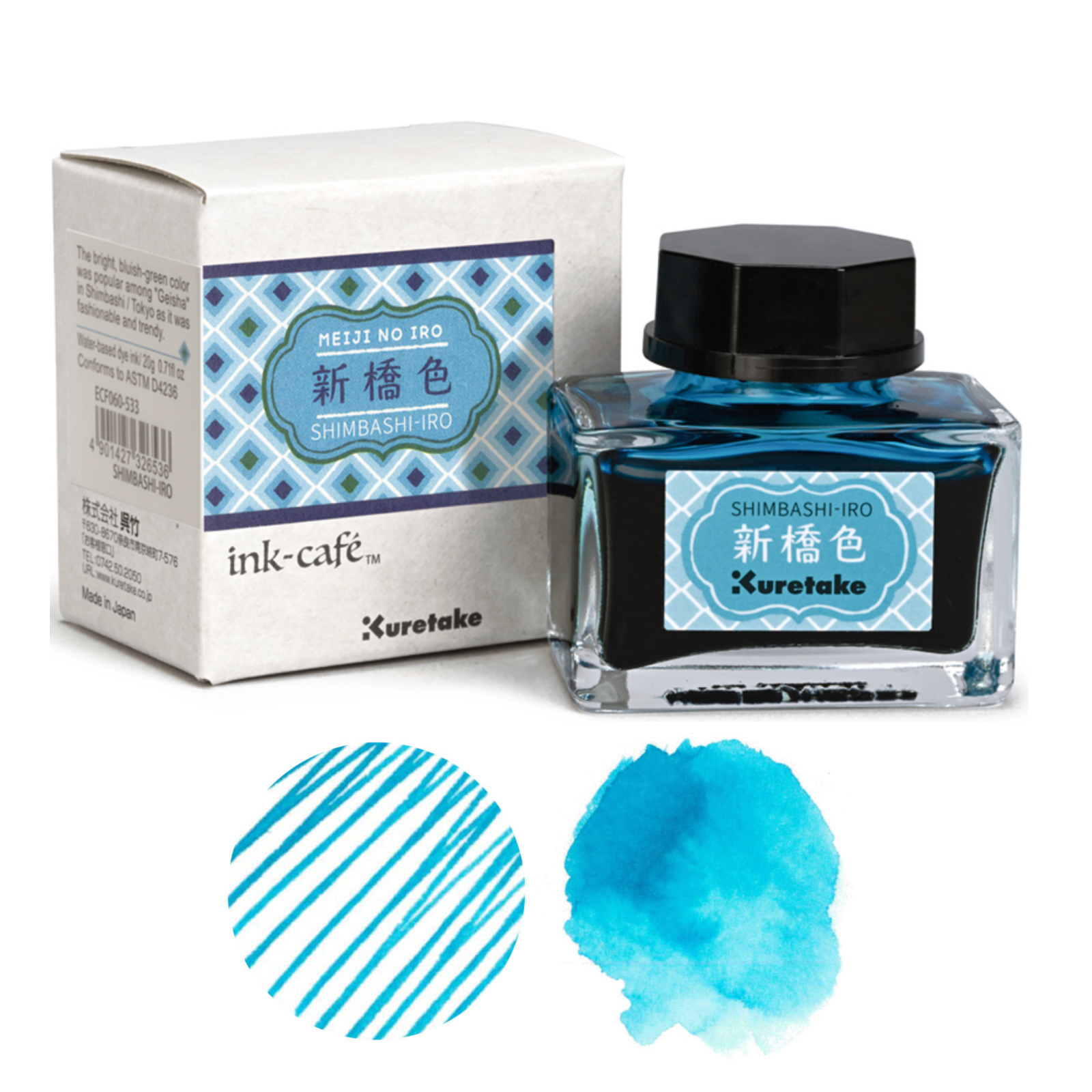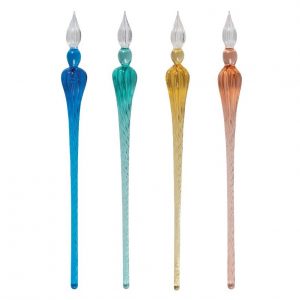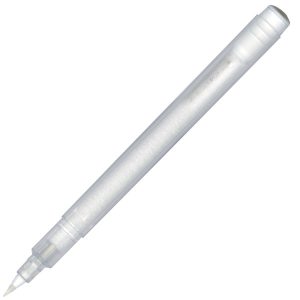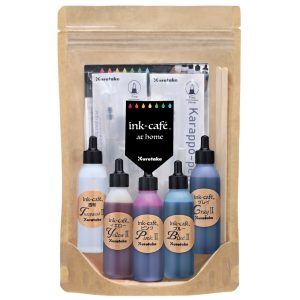Description
Kuretake Meiji No Iro Ink – Shimbashi-Iro
The “MEIJI NO IRO” series is a beautiful selection of colored inks which were inspired by popular colors from the Meiji era of Japan. Each color has a history that originates from that era. In the late Meiji era, new colors were born with the creation of chemical dyes. “Shimbashi” is the name of a place found in Tokyo. The bright, bluish-green color was popular among “Geisha” in Shimbashi as it was fashionable and trendy.
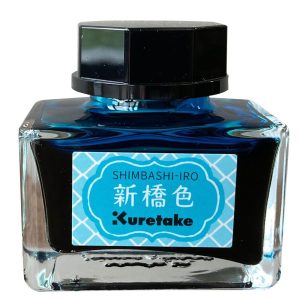
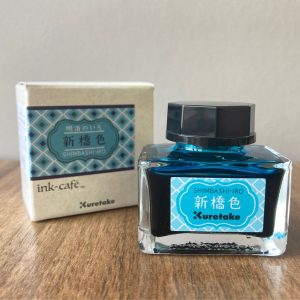
Please enjoy using this ink, and be reminded of the old days of Japan. It can be used with fountain pens, glass pens, dip pens, in empty markers and more. Try this beautiful ink with the Kuretake Ink Cafe or Karappo pens to make your own ink markers.
Kuretake Co., Ltd. was founded during the Meiji era (1902). In 2022, in commemoration of the 120th anniversary of their founding, they have carefully chosen 6 colors of ink, reflecting on the Meiji era.
About the Colors:
Read more
EBICHA(葡萄茶)
In the Meiji era, Purple was considered a noble color used only by the aristocracy. Since people were afraid of using Purple, “EBICHA” was often used instead of traditional Purple. EBICHA also became a popular color for Hakama (Japanese traditional pants) intended for female students.
ARAISHU(洗朱)
In the latter half of the Meiji era, cherishing Japanese culture and traditional Japanese-style colors was a new development. One of those colors is “Araishu”, which is a bright vermillion color that looks slightly washed, or a light vermillion color.
SHIMBASHI-IRO(新橋色)
In the late Meiji era, new colors were born with the creation of chemical dyes. “Shimbashi” is the name of a place found in Tokyo. The bright, bluish-green color was popular among “Geisha” in Shimbashi as it was fashionable and trendy.
KUROGANEIRO(鉄色)
“KUROGANEIRO” became popular during the middle of the Meiji era into the Taisho era. This color is characterized by a dark, dull, bluish green color, and was often used as the color for store clerk aprons.
KUJAKURYOKU(孔雀緑)
“KUJAKURYOKU” was introduced by the West during the Meiji era. It is a bright, bluish-green, like the beautiful feathers found in peacock wings. Peacocks have been loved in Japan since ancient times, and it is said that the recognition of the common people increased during the Edo period.
SHIKON(紫紺)
Meiji era is also called “the purple era” because purple or light purple was often used in women’s clothing as a chic or cool color. Shikon “Purple” has been a trendy color since the Meiji era.
*freeze risk – Cannot ship in freezing weather*

